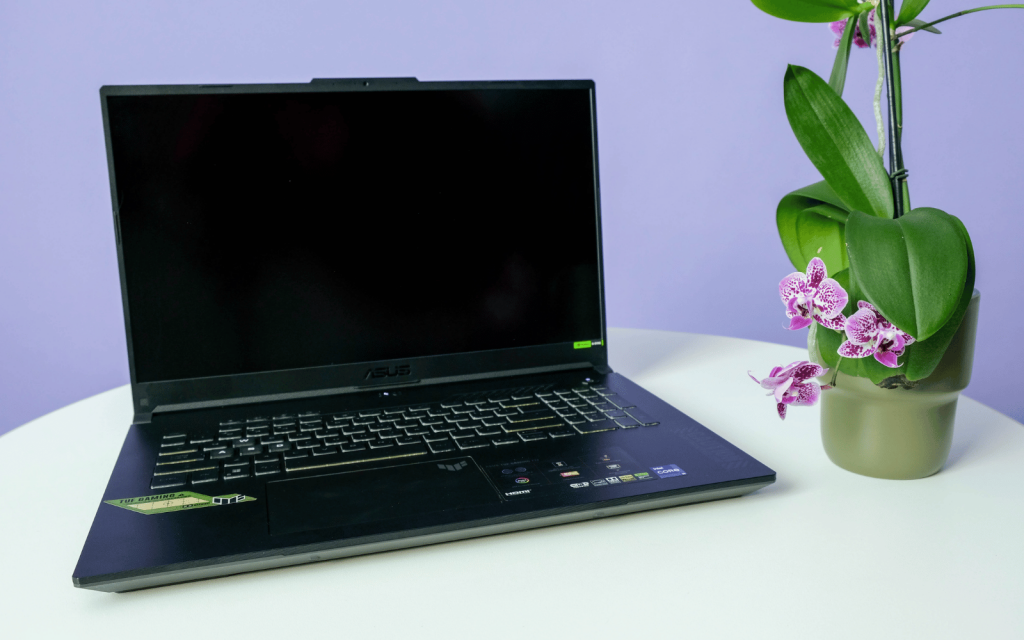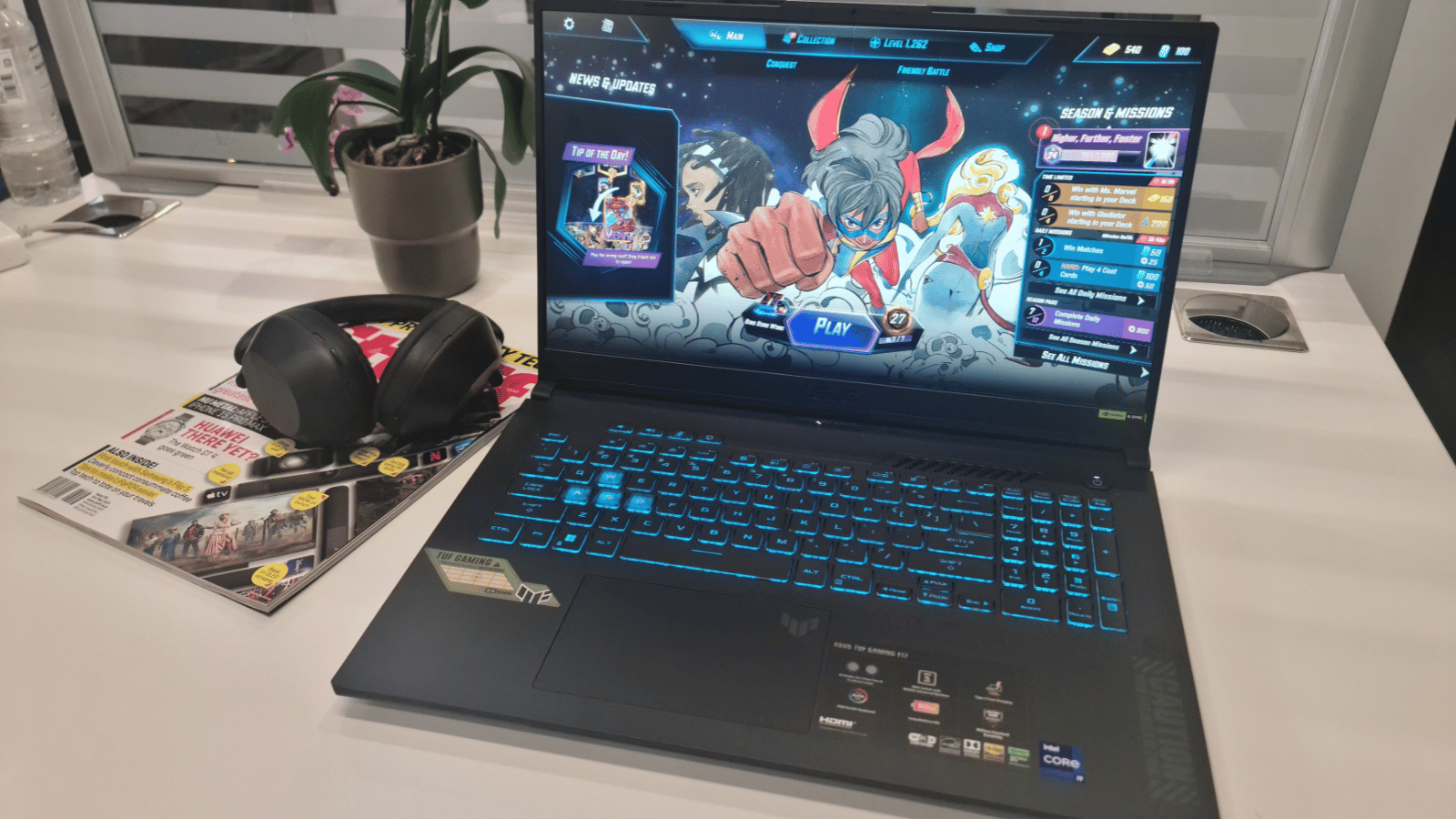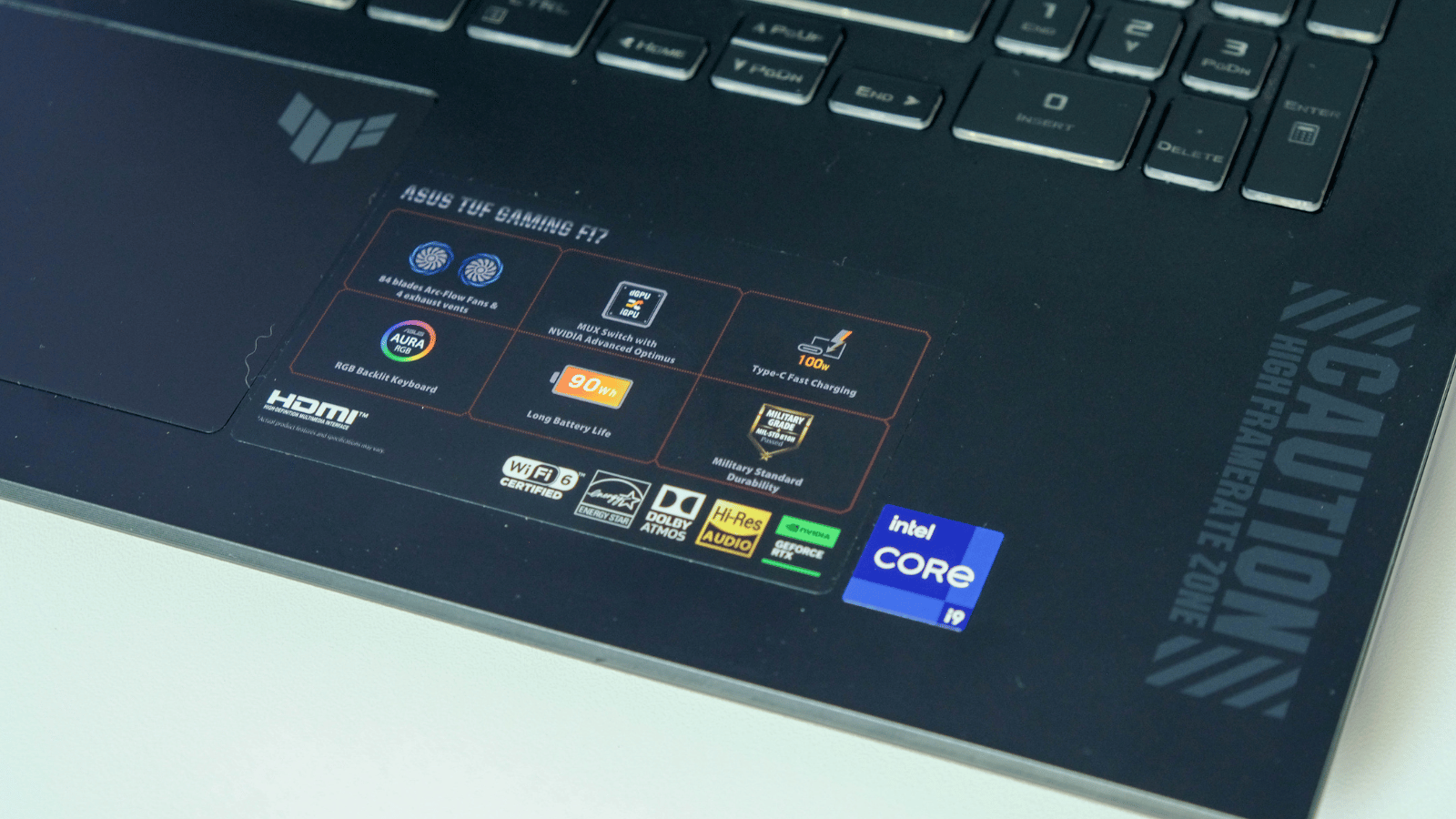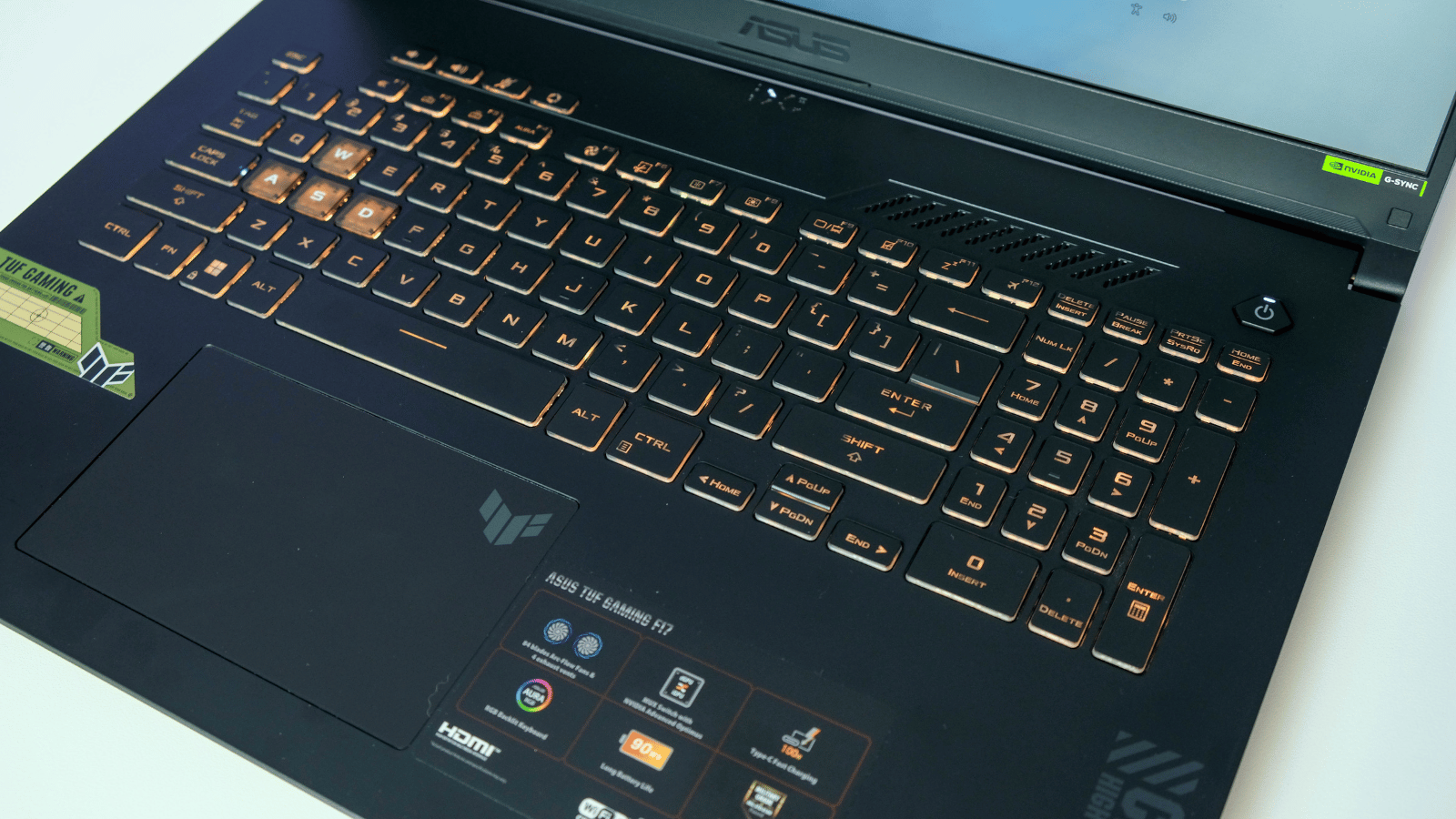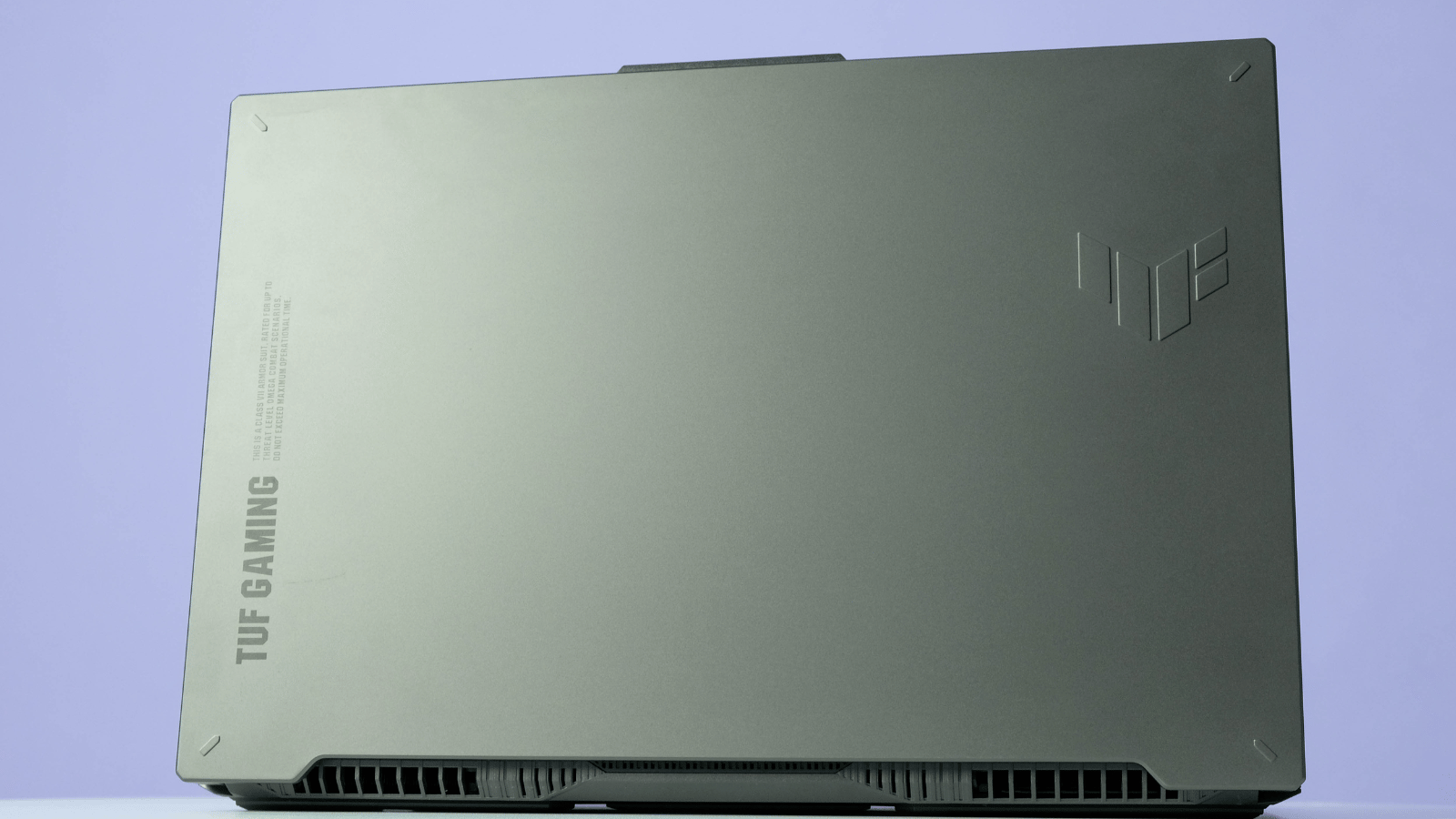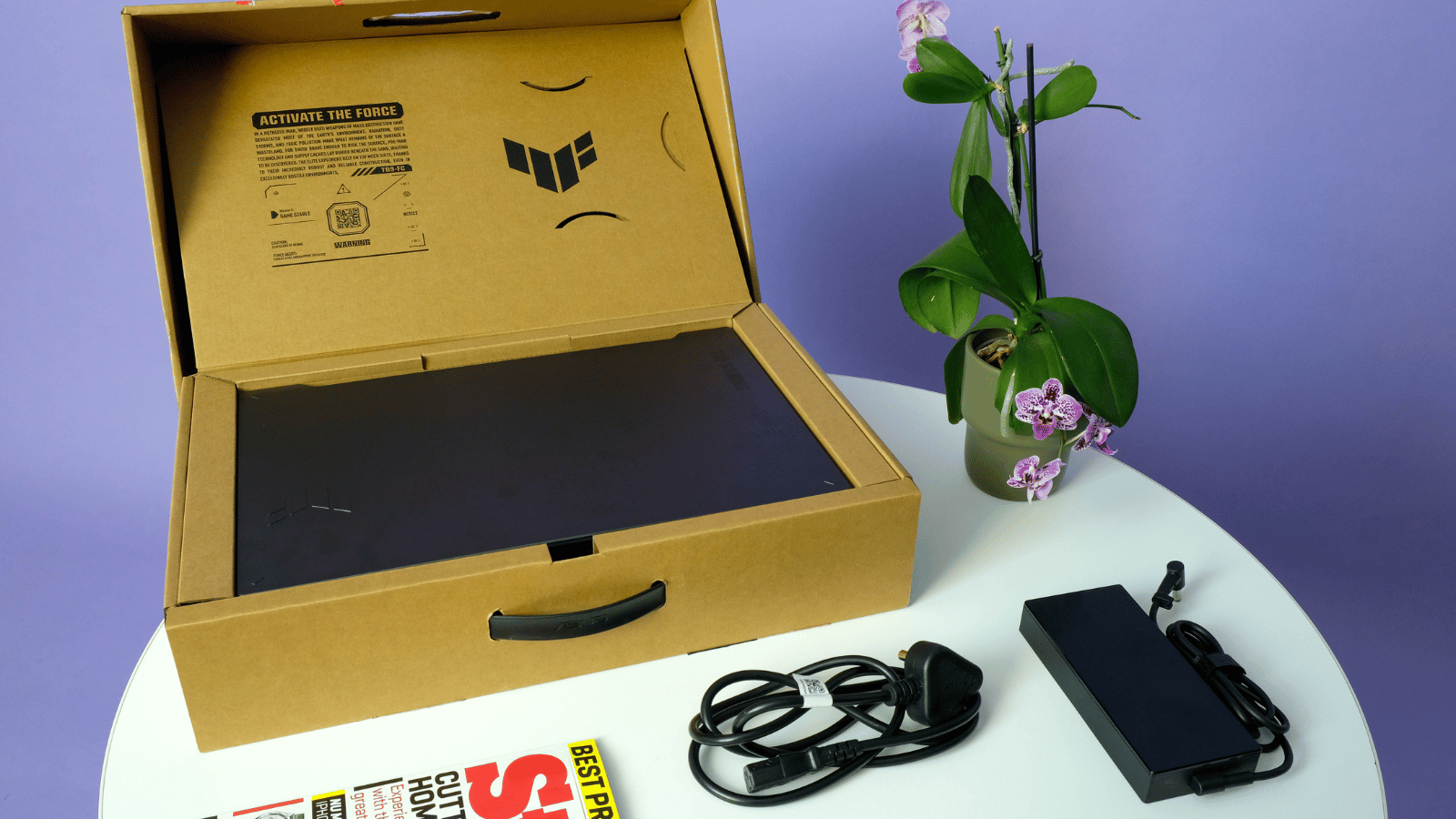We walked away from Asus' F17 wishing we hadn't. If that doesn't tell you all you need to know, maybe the 17.3in display, 16GB of RAM, RTX 4050, and generally nice-to-look at shell might do the trick. Yeah, it'll cost a fair bit of dough, but when compared to similar-specced laptops, Asus' efforts have to be commended.
-
Design
-
Display
-
Performance
-
Features
-
Value
Asus was firing on all cylinders this year. Not only did it whip out a piece of handheld wizardry that could handle Nintendo’s game of the year better than they could, but it’s been putting out laptops faster than a Gatling peashooter that’s just seen a breakdancing zombie coming its way. Nearly all of them have been good, too. We didn’t get the chance to fool around with the Strix Scar 18, but we’ll take their R88,000 word that it was a good one. What did come our way was the Asus TUF Gaming F17.
Sure, it’s a pricey bugger — R27,000+ by our last count — but it comes packing a lot of value. For the average notebook, the price would be too much. The thing is, this isn’t an average notebook, it’s a 2.6kg gaming-focused beast that could probably survive an active warzone and look good doing it.
It’s no OLED, but it’ll do
Would we have liked an OLED display? Does the ursine mammal evacuate its bowels in a heavily forested area? The answer to both is a resounding ‘yes’. Still, we weren’t overly bothered when we unwrapped the thing and caught a glimpse of the spacious 17.3in FHD 16:9 IPS display. It did the best with what Asus gave it, keeping colours sharp and vibrant — for the most part. Would it have looked better touting an OLED display? Undoubtedly, but then you might as well look for a better machine (and expect to pay more).
Being a gamer at heart — and by name — you probably won’t be surprised to hear that this here laptop flaunts a 144Hz refresh rate. As it should. We didn’t pretend what it would be like to have R27,000 on hand to just barely compete with something as pedestrian as a PS5. Whether the extra 24 frames will finally get you to the top of an in-game leaderboard in Rocket League, that’s on you. The guys who blame lag after a round of CS might want to look elsewhere for something sporting 165Hz+.
It’s not all sunshine and daisies. Asus is quiet about the peak brightness this thing should be hitting and we think we’ve got a good idea why. The F17’s display won’t put out its best performance against a day in the sun – lasting about as long as your average Redditor before needing a move to the shade. That’s to be expected unless you feel like paying a whole lot more. If you have some control over your ambient lighting, brightness shouldn’t be a concern.
Stick to the great indoors and the F17 will perform well. It won’t be able to run Crysis at 8K but it held up in Portal 2 and The Witcher 3 without issues – always a good sign.
A solid performer
It’d be a bit of a waste of a decent display if Asus didn’t stock up the internals to match it. That hasn’t happened. Our review model turned up with Intel’s 13th Gen Core i9-13900H processor, 16GB of DDR4 RAM, an RTX 4050 GPU, and a 1TB NVMe SSD. If you’ve already counted the RTX 4050 out, don’t be so quick. Sure, the 13th-gen Core i9 would get more of a workout with something like the RTX 4060, yet this pair surprised us.
It managed to provide respectable performance in The Witcher 3 at 1440p, reaching a fairly consistent 90fps after fiddling with the settings and disabling Ray Tracing. It had no trouble beating that in Rocket League, although we did have to scale back the resolution a bit to get close to the 144Hz refresh rate.
What ended up being a stand-out here was the F17’s 90Wh battery life. It squared up to and defeated a regular two-hour load-shedding session, games and all. Have it take on something nastier from Eskom, a four-hour slot for instance while running games, and it won’t make it past the three-hour thirty mark. Confine your activities to the basics, and it’ll fly through those longer sessions without much tampering, either. Still, you’ll want to keep that chunky battery block handy if there’s any longer-than-average gaming stints afoot.
There’s always something to moan about, right? In the case of the F17, it’s the disappointing speakers that let the rest of the build down – falling far below the standard we’ve come to expect from Asus. When we didn’t have a pair of wireless headphones paired up, our review model rarely left the 100% marker – and it still left us wanting more.
Stay classy
Asus claims to have whittled the F17’s overall body size down by 5% without needing to reduce the screen size. Whether that’s true or not won’t do much to change the fact that the F17 still weighs 2.6kg. That’s about average for laptops like this, but we suggest doing a few pull-ups if you plan to lug this thing around on your back across town.
It may be on the chunkier side, but since 2016, that’s considered a good thing. Asus has gone the extra mile and included an aluminium chassis – a rare break from the overdose of metallic-looking plastic you’d usually find in this price range.
Weights and percentages aside, the F17 stands up to the all-important eyeball test — it looks good. It’s going for a classier look with a hint of industrial. We could’ve done without the ‘TUF Gaming’ branding taking up the left side of the lid, but that’s gaming laptops for you.
Lift that lid and meet the generously sized trackpad and RGB-touting keyboard that was large enough to house a traditional num-pad. Typing felt good enough that we didn’t feel the need to seek out an external keyboard. The trackpad does the job just fine if a mouse isn’t on hand for general use, but you’d have more fun falling down some stairs than playing games with it.
Around the edges are all the familiar ports you’d expect to see. Things are mostly bare on the right, housing a single USB-A 3.2 Gen 1 port. Everything else lives on the left, including the DC power jack, HDMI 2.1, LAN, Thunderbolt 4, USB-C 3.2 Gen 2 and another USB-A 3.2 Gen 1 port.
Asus TUF Gaming F17 verdict
We can’t pretend that the close to R30,000 price tag won’t be a concern for some. But anyone willing to bite the bullet won’t be disappointed in their choice — especially if you can swing one that’s rocking an RTX 4060. Good gaming chops, a decent display, and impressive battery life land in the F17’s ‘win’ column. It’s easy to knock the exceptionally poor speakers, but couple it with a good pair of headphones and you’re winning.

